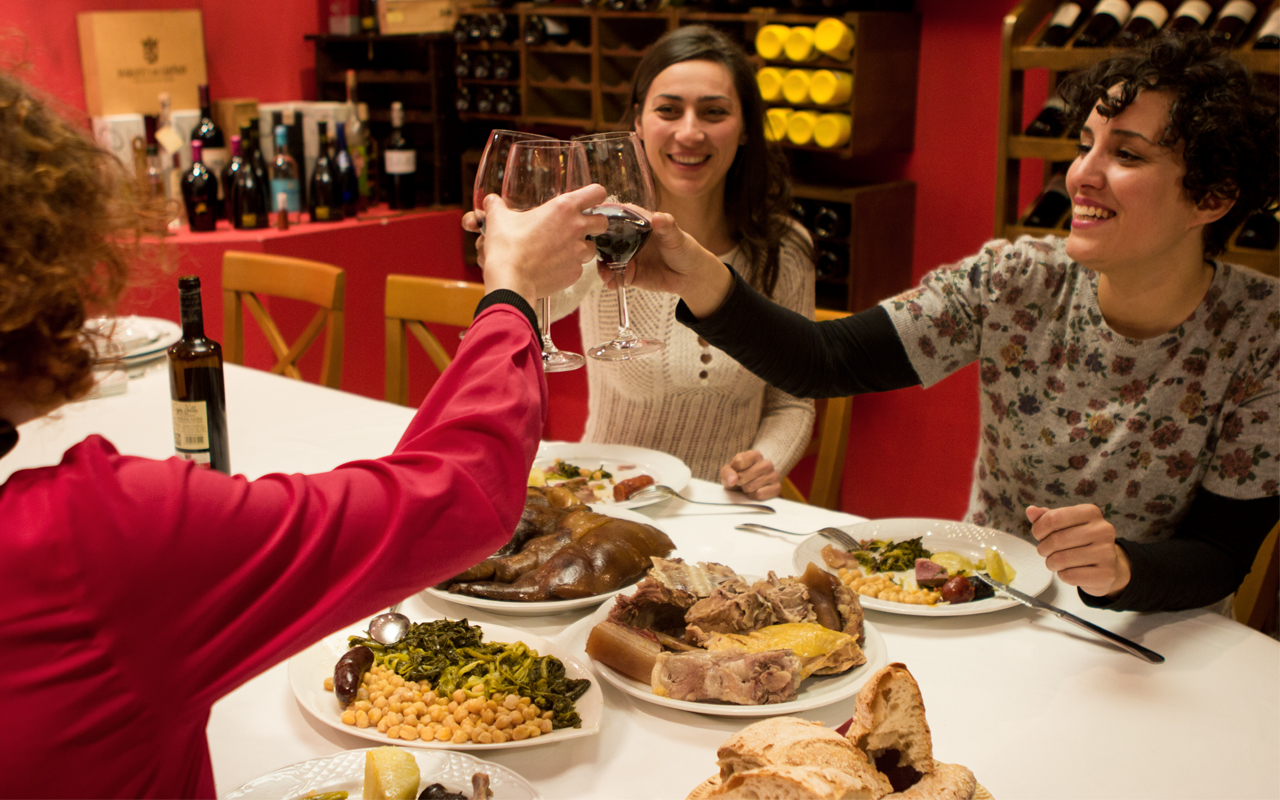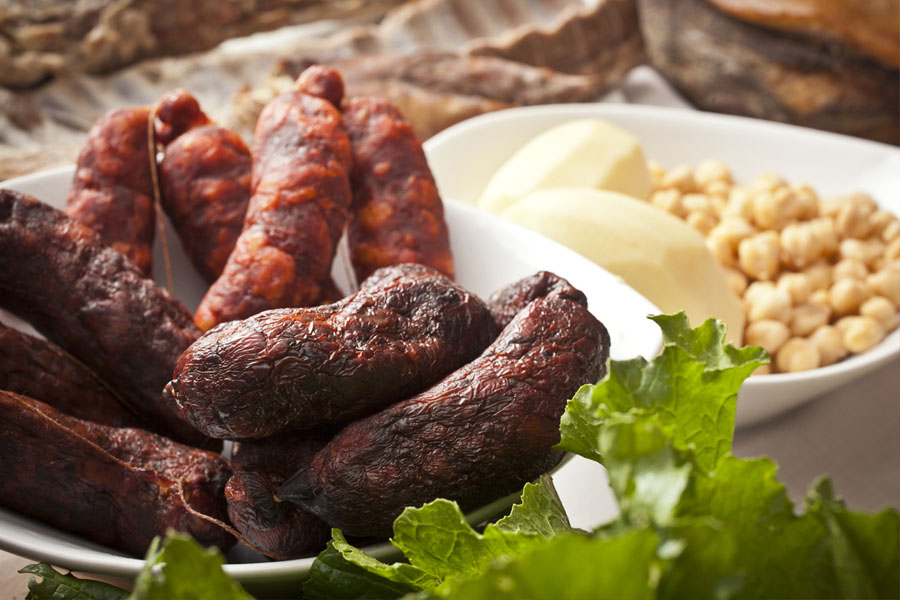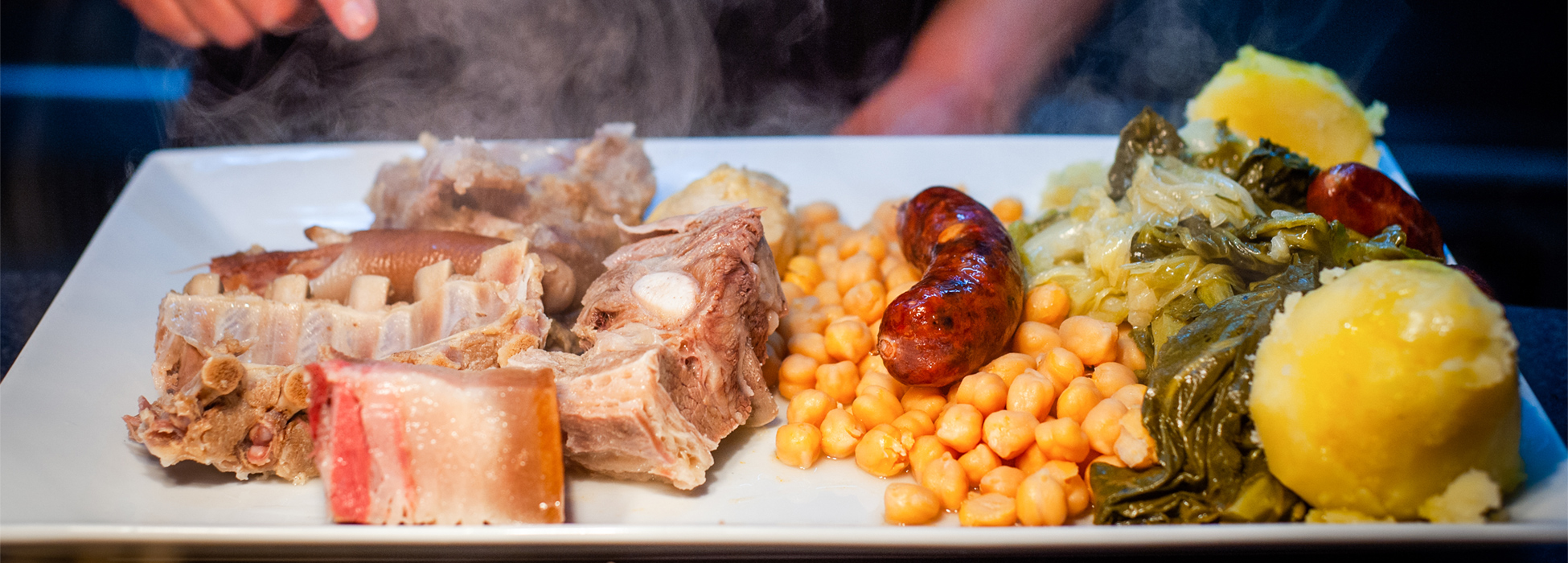Lalín, the art of cooking the best cocido
A good cocido (Galician stew) is always welcome in winter, and As Rías Baixas is the perfect place to enjoy this culinary delight. In February, Lalín becomes the international capital of this delicious traditional dish, when this town in the region of Deza celebrates its Feira do Cocido, declared Festival of International Tourist Interest. This event gathers every year thousands of visitors who want to taste this delicious and succulent meal.
The festival will be celebrated in great style with a varied programme combining food, costumes, music and a large number of activities for all. Everything revolves around a recipe including more than a dozen ingredients, which perfectly combined make up the best cocido. Backbone, salt pork, pork ribs, salt pig's ears and trotters, tongue, home-raised chicken, veal and chorizos (hard pork sausages) from Lalín are the key ingredients in a dish where vegetables and pulses as white beans, chickpeas, potatoes and turnip tops are also essential.


It became institutionalised in 1969 thanks to the joint proposal of six mayors of the region of Deza. This event pays homage to the traditional cuisine, a way to prepare the traditional stew that is very different from other stews in Spain such as the maragato (traditional stew from Maragatería, León), the lebaniego (stew from Liébana, Cantabria), the montañés (stew from Cantabria), the stew from Madrid or the escudella (stew from Catalunya).
The Cocido Festival and the weeks of previous activities, a prelude to Carnival, are the perfect moment to get to know the whole region.
The tasting of a stew dish from Lalín is an experience that needs to be enjoyed in a slow and unhurried manner and its preparation is a slow process too. In fact, it begins four days before being tasted. First you have to desalt the lacón (pork shoulder) in cold water, which needs to be changed every twenty-four hours. Two days later, each piece of meat that is going to be cooked in the pot is thoroughly cleaned up; after that this process will be repeated with the lacón. The day before boiling the stew will be the moment to leave the chickpeas and the broad beans to soak and, according to the people from Lalín, they must always be placed into different pots.
Winter is, therefore, one of the best times to visit the northern part of the province of Pontevedra. The stew season in Lalín brings this dish closer to thousands of guests that visit daily the capital of Deza and its many restaurants. Furthermore, this festivity is always accompanied by a long ludic and cultural programme that stands out because of its ethnographic, musical or artistic activities such as the art exhibition Cocido das Artes, which also includes charity performances. During this festival traditional meat and vegetable stalls are set up in Campo da Feira Vella where the pig slaughter is another major attraction. This longstanding tradition, which was performed practically in almost every Galician rural house until recently, now is been shown in the different parishes of Lalín and it is accompanied by the tasting of national products obtained from pig slaughter.
The Cocido Festival and the weeks of previous activities, a prelude to Carnival, are the perfect moment to get to know the whole region. The region of Deza, which also comprises the municipalities of Silleda, Agolada, Rodeiro, Dozón and Vila de Cruces, enables the visitors to enjoy a landscape of unique spots. The waterfall of the River Toxa, the Monastery of Carboeiro, the pendellos (the place where the fairs were hold and the goods were stored in the past) of Agolada, the mountains of O Candán, the islands of Gres or the Pazo (Galician manor) of Liñares are locations that always make an impression on the visitors.








